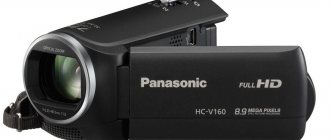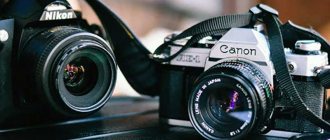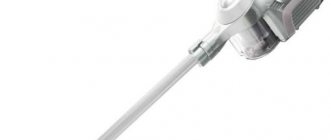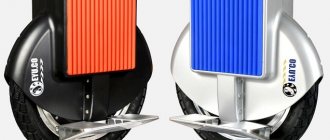Stargazing is of interest not only to professionals, but also to amateurs who cannot imagine life without the starry sky. But even for experienced astronomers, choosing the best telescope for your home is not easy.
People's choice:
| Model | Price |
| 1. Sturman HQ2 60090 AZ | from 20,000 rub. |
| 2. Levenhuk Skyline BASE 70T | from 15,000 rub. |
| 3. iOptron SmartStar-A-R80 Pulsar Purple | from 27,000 rub. |
| 4. Celestron Travel Scope 80 | from 16,000 rub. |
| 5. Veber PolarStar 900/90 AZ | from 24,000 rub. |
mini telescope rating
Types of telescopes
Different telescopes
There is a long list of devices for observing stars on sale:
- refractory ones - they are often called lens ones - are simple, reliable and have a minimum of manual settings;
- reflex or mirror; their main element is a mirror, due to which the image never loses clarity;
- catadioptric or hybrid - absorbed all the best from previous models and are based on two schemes;
- chromospheric – designed for images of the solar chromosphere.
How to choose a telescope for beginners
Choosing a telescope for beginners
It is very difficult for amateurs to decide on their first device, since they cannot decide on the most important parameters.
There are only a few of them:
- focal length;
- optical design;
- lens diameter;
- zoom ratio;
- mount or stand.
You also need to take into account your own experience. For beginners, price and ease of setup are important. But more advanced astronomers can concentrate on performance, choosing quality and innovative technologies.
Focal length
This definition means a segment between 2 points:
- lens (mirror);
- convergence of rays.
Its value reflects how far the device can look. The optimal distance is 700 mm.
Important! When choosing a telescope, you should not rely on focus. After all, the same distance with different lenses gives different results. Therefore, it is not advisable for beginners to “chase” this parameter.
Optical design
In simple terms, the optical design is the way the telescope will show objects in space. It is also called the eyes of an astronomer.
Optics circuits are divided into 2 large categories:
- refractors;
- reflectors.
The first are lens type optics. Such schemes:
- easy to use;
- are distinguished by clarity;
- they are inexpensive.
Reflex circuits are mirror optics. They require more careful attention and are more expensive.
Lens diameter
Depends on the diameter:
- image quality;
- capture level.
For beginners, models with a diameter of 150 mm will be sufficient. With such equipment it is possible to observe nearby objects.
Hobbyists and professionals will need 200-400 mm. With their help, observation of distant cosmic bodies is carried out.
Zoom ratio
None of the instructions indicate the multiplicity. This is due to the fact that for each device it is calculated individually and may vary. The calculation formula is simple: focal length of the device / focus of the eyepiece. By changing the eyepiece, the astronomer will also change the zoom ratio.
Important! Beginners rely on higher multiplicity. But 20-100x will be enough for them.
Mount or stand
The mount is a special support with a rotating mechanism. They are divided into several categories:
- azimuthal - movement occurs vertically and horizontally;
- equatorial – adjustment is made to a parameter such as latitude;
- Dobson's is a mixed type, one of the heaviest.
For novice astronomers, the azimuthal option is suitable:
- easy;
- collapsible;
- inexpensive.
The equatorial stand is relevant for large and heavy devices that are purchased by professionals.
Best Hybrid Telescopes
3. Levenhuk Skyline PRO 80 MAK
This model is considered by many astronomers to be professional; it is produced on the basis of the Maksutov-Cassegrain system of lenses and mirrors. The telescope is quite compact in size, and the picture is of very high quality. First of all, such a telescope is designed for observing distant space objects - double stars, clusters, nebulae and galaxies. The lens diameter is 80 mm. The telescope is mounted on a reliable German-made equatorial mount. The tool is well suited for outdoor trips, especially since it does not weigh too much. The lenses are coated with anti-reflective compounds, allowing maximum light to pass through them. Mirror surfaces also have a special protective layer, which significantly increases their service life.
More: Top 10 best table hockey games
The equatorial mount is equipped with fine movement handles and has a connector for installing an electric motor. The mount has special coordinate circles, due to which you can quickly find the required object using celestial coordinates. The tripod is height adjustable and has a shelf. With the help of such a telescope, you can get the highest return, which will be very useful both for observations and for taking photographs of various space objects.
Advantages:
- Good aperture;
- Small size and weight;
- If necessary, you can connect various kinds of accessories.
Flaws:
- Expensive design.
Levenhuk Skyline PRO 80 MAK
2.CELESTRON NEXSTAR 4 SE
In second place in this section of the ranking of the best telescopes is a universal device with an attractive optical design. It is easy to install and has a compact size, and the cost is quite reasonable. The diameter of the main mirror is 102 mm. With such dimensions, it will be possible to discern relatively close objects located mainly within the Solar System. The optics are treated with anti-reflective compounds and are produced using Star Bright XLT technology, which minimizes possible light loss. The telescope comes complete with a database that includes over 4,000 cataloged objects. If necessary, it can be updated via the Internet.
The telescope is fully computerized and has a motorized fork mount - this allows you to find and monitor space objects automatically. SkyAlign guidance system - just point it at three stars, after which it will align the device. This function is very convenient for beginners. The telescope operates on the basis of the Maksutov-Cassergrain optical design; it will not require additional color calibration. The dimensions of the optical tube are small and it is also characterized by its low weight. The tripod is very easy to fold.
Advantages:
- Can be brought into working position in just a few minutes;
- Portable dimensions;
- Light weight;
- Does not require calibration.
Flaws:
- Due to the diameter of the main mirror, it is not always possible to view objects located in deep space.
CELESTRON NEXSTAR 4 SE
1. Levenhuk SkyMatic 105 GT MAK
The undisputed leader in its segment of the best telescopes is this design, which has a pointing function. Another important advantage in terms of equipment operation is the relatively low weight and compact overall dimensions. This was achieved largely thanks to the use of the Maksutov-Cassegrain optical scheme. The diameter of the main mirror is 102 mm, the focal length is significant - this allows you to view both fairly distant objects such as nebulae or star clusters, and close ones - planets, comets, asteroids, satellites, and so on. The mount is equipped with drives on each axis, making it possible to take photographs with short shutter speeds. Using a standard DSLR or even a webcam, you can get an excellent broadcast from the lunar surface. The telescope finds all the required objects on its own.
The alt-azimuth mount with automatic guidance function is very simple to operate - even a child can figure it out. Guidance is carried out using a special remote control with a SynScan AZ system. The database contains over 40,000 space objects. If necessary, the telescope is connected to a laptop or personal computer - there is a special cable for this, and control is carried out using a number of programs. The telescope comes with two eyepieces with focal lengths of 10 and 25 mm.
Advantages:
- Can be controlled using a computer;
- There is a function of automatic targeting of objects;
- If necessary, you can connect various kinds of accessories;
- The tripod is very convenient and weighs a little.
Flaws:
- It costs expensive.
SUN AND MOON in Levenhuk Skyline PRO 105 MAK
Levenhuk SkyMatic 105 GT MAK
How to choose the best telescope based on price and quality
Selecting a device is quite difficult even for experienced buyers. Moreover, each category of astronomers needs “its own” equipment.
For a child
For a child
Children often change their interests. Therefore, if a schoolchild begins to “rave” about the night sky, you should not buy an expensive model for him. And there are many reasons for this:
- the child may not like stargazing;
- it will not cope with the adjustments;
- Expensive devices require additional purchase of a lot of eyepieces.
A telescope with the following parameters is suitable for schoolchildren:
- azimuth support;
- diameter up to 70 mm;
- simple adjustments.
This option makes it possible to observe ground-based and nearby space objects.
For astronomy lovers
For astronomy lovers
If your hobby becomes serious, you need to take care of purchasing the appropriate equipment. For this purpose, you can choose both refractors and reflectors.
Among the main parameters, it is important to pay attention to the diameter - 90-130 mm. This is enough to observe objects of different ranges from within the city. But in megacities the quality of observations is poor. Therefore, it is worth taking a closer look at mobile models with a diameter of 250 mm. Such devices are transported and installed outside the city, where the sky is clearer.
Another step in fascination with the sky is astrography. Devices with this option make it possible not only to observe, but also to photograph stars. For some hobbyists, their hobby becomes a stable source of income.
For deep space
Professional equipment requires powerful and high-quality optics. The following type of device can handle the observation of galaxies and nebulae:
- reflector;
- diameter from 250 mm.
Important! The multiplicity in this case loses its meaning. Even the minimum value will give a good result.
Rating of telescope models
Sky-Watcher BK 15012EQ6 SynScan GOTO
In first place is the Sky-Watcher telescope. The model has a lens size of 150 mm. The aperture is f/8.3. Capable of magnifying up to 300x. Has an auto-guidance system. This model will make it possible to take good quality aerial photographs. This model has significant weight, so transporting the device will be problematic. The weight of the pipe is 5 kg. The average price for a device is 213 thousand rubles.
Sky-Watcher BK 15012EQ6 SynScan GOTO
Advantages:
- The guidance system is automatic;
- Good optics;
- Sufficiently high aperture ratio.
Flaws:
- Large weight of the structure;
- Significant price.
Veber 400/80 AZ
In second place is the Veber 400/80 device. It is quite compact in its design, and at the same time has excellent aperture. Thanks to its small size, it will be an ideal option for trips out of town. However, it is also suitable for permanent installation in an apartment. Gives a straight picture. The maximum magnification you will get is 160x. Gives you the opportunity to examine the craters on the moon, as well as take a closer look at the rings of Saturn. Gives a clear and focused image.
The eyepiece of the device is located on the side, at an angle of 45 degrees. It can rotate, making stargazing more comfortable. It has an azimuth mount and a viewfinder. A minor drawback is that the tripod portion of the device will have to be purchased separately.
Veber 400/80 AZ
Advantages:
- Light weight;
- Suitable for travel;
- Low price.
Flaws:
- The mount can easily break and therefore requires careful handling.
CELESTRON NEXSTAR 8SE
The third place is occupied by the CELESTRON device. This device has a Schmidt-Cassegrain optical system. Due to this, it has a compact size, but the picture quality is not lost because of this. The maximum magnification reaches 480 times. Has excellent resolution. Due to its size, it is possible to install the device and observe the sky even outdoors.
The model has a screen and a built-in remote control. The proprietary NexRemote system is installed, which is suitable for the computer. However, for all these advantages the device is quite expensive. The average price reaches 130 thousand rubles.
CELESTRON NEXSTAR 8SE
Advantages:
- Good quality optics;
- Small sizes.
Flaws:
- High price;
- The set includes one lens.
Levenhuk Strike 80 NG
The fourth place is occupied by the Levenhu device. Refers to refractor devices. It is light in weight, so you can even carry it with one hand. The unassembled device reaches only 80 cm, so it can be moved even on public transport. A wrap-around prism is installed, which makes it possible to obtain a direct image. Due to this property, it applies to universal models. Therefore, you can observe both celestial and terrestrial objects.
The viewfinder is equipped with a red dot, which allows you to find the desired object quite quickly. The device is equipped with an alt-azimuth mount, making the telescope quite easy to operate.
The device is well protected from moisture getting on the lens, as well as from strong impacts. Included with the telescope you will receive a planetarium program and a book for beginning astronomers.
Levenhuk Strike 80 NG
Advantages:
- Magnification up to 360 times;
- There is a red dot;
- Full set.
Flaws:
- Small aperture.
BRESSER JUNIOR SPACE EXPLORER 45/600 AZ
Fifth place goes to an excellent telescope suitable for teenagers. It is a classic representative of refractory models. Mounts on an alt-azimuth mount. The set includes a tripod made of aluminum, due to which it has a small weight. The great advantage is that it can be adjusted depending on the growth of the child. There are several body color options.
The device comes with several types of optics, which allows for ground-based observations.
Reading customer reviews, we can conclude that this is the most suitable model for a teenager who is interested in the stars.
BRESSER JUNIOR SPACE EXPLORER 45/600 AZ
Advantages:
- Bright;
- Good optics;
- Low cost.
Flaws:
- Small eyepiece.
VEBER UMKA 76/300
The sixth place is occupied by the small VEBER telescope. Belongs to lens models, equipped with a Dobsonian mount. Great for planetary observation. To view the surface of the planets in more detail, the kit includes several lenses that can be installed. There is also a moon filter. Both children and adults can observe the sky, since the device is quite stable and does not take up much space. It can be easily placed on the table. The bear Umka is depicted on the body, which gave the name to the model.
The cost of the device is quite reasonable, and the design is stylish and attractive.
VEBER UMKA 76/300
Advantages:
- Stylish;
- Replaceable optics;
- Compact;
- Attractive price.
Flaws:
- Only suitable for observing planets.
The best telescope manufacturers
Large companies have been operating in the market for several decades. They produce not only professional, but also simple budget models. Their devices are distinguished by consistent quality and a wide range of additional options.
The list of the best companies includes:
- Veber - the company emerged in the late 90s of the last century and quickly became a leader due to innovative technologies and a wide range. It produces telescopes, binoculars, optics and elements for various devices.
- Sky-Watcher is a Canadian company on the market for over 40 years. It produces more than 15 lines of telescopes for different budgets, as well as components, accessories, and binoculars.
- Bresser is a German brand that creates products of different complexity categories. The list of items produced includes binoculars, microscopes, eyepieces and more.
- Celestron is an American brand that has been on the market for more than half a century. Its products are renowned for innovation. The most significant percentage in product positions is occupied by telescopes.
- Levenhuk is a Russian company that originated in the USA at the beginning of the 21st century. She is responsible for the latest lines of telescopes and other optical equipment.
Review of the best telescopes for children
Children's models have a number of distinctive features:
- diameter of achromat refractors up to 80-90 mm;
- altazimuth mount;
- ease of use.
Their main feature is their non-inverted image. While amateur and professional devices require adjustment.
Sturman HQ2 60090 AZ
Classic Sturman HQ2 60090 AZ
A classic model with good equipment, which includes several eyepieces, gives a direct image.
Characteristics:
- focal length 600 mm;
- lens diameter 90 mm;
- multilayer coating;
- maximum magnification 180x.
Advantages and disadvantages
ease of operation
tripod adjustment
possibility to connect the camera via adapter
lack of automatic guidance
The average cost of the device is 20,000 rubles .
Positive reviews are often written about the telescope. Users mention:
- photos of distant and near objects;
- good viewfinder 6 x 30.
Levenhuk Skyline BASE 70T
Levenhuk Skyline BASE 70T Refractor
A classic type refractor that stands out for its clear image. With its help, the lunar surface becomes closer, which delights young astronomers.
Characteristics:
- six-fold optical finder;
- classic mount;
- diagonal mirror;
- 70 mm lens.
Advantages and disadvantages
lifetime warranty
light weight – up to 3 kg
auto-guidance
the need to periodically repeat focusing
The price of the device is affordable - 15,000 rubles .
Users call the model a good and high-quality telescope for beginners. They also note that the optics remain transparent even after years.
iOptron SmartStar-A-R80 Pulsar Purple
Beautiful model iOptron SmartStar-A-R80 Pulsar Purple
Beautiful model with a bright design and a remote control with an LCD display. Its characteristics:
- Mount The Cube;
- 25 mm stainless steel on a tripod;
- rigid fixation system;
- 80 mm lens.
Advantages and disadvantages
GPS module
sharp image
more than 5,000 objects in the database
high price
Disadvantages - high cost, reaching up to 27,000 rubles in some regions.
Owners of the device especially positively note:
- focal length 400 mm;
- set with two additional eyepieces;
- the opportunity to observe the stars, the Moon and other objects.
The best telescopes for deep space
3. Synta Sky-Watcher BK 1149EQ1
This is a fairly high quality Newtonian reflector equipped with an EQ1 equatorial mount. Thanks to this device, you can see many galaxies, various star clusters, nebulae and other space objects located at a distance of a huge number of light years from the Earth. The manufacturer claims that this telescope is even suitable for observing closer objects belonging to the Solar System - planets, asteroids, comets, satellites, and so on. The image is quite bright, there are no chromatic aberrations of any kind. The design provides a very convenient optical finder. The telescope comes with two eyepieces - their diameters are 25 and 10 mm. The first is intended to obtain an overview image, the second is used to study the selected space object in more detail.
More: Top 10 best combo amps for electric guitar
The optical tube is placed on a special equatorial mount, with the help of which it is possible to compensate for the daily movement of objects across the sky. All mechanisms are characterized by smooth movements, no jerks are provided. If necessary, an electric motor powered by a lithium-ion battery is placed on the right ascension axis. It is not included in the kit and must be purchased separately.
Advantages:
- Very high performance in terms of aperture ratio;
- If necessary, you can install various kinds of accessories;
- Spherical image aberrations are completely absent.
Flaws:
- Quite a serious weight - it is 11.7 kg, not very convenient to take on foot;
- The power of the eyepieces leaves much to be desired; astronomers recommend purchasing additional ones to get a better picture.
Synta Sky-Watcher BK 1149EQ1
2. Levenhuk Skyline 76×700 AZ
This model, like the previous one, is made on the basis of a classical optical design - a Newtonian reflector. This design is ideal as a first instrument for a novice astronomer who is just taking his first steps in this field - the telescope does not weigh too much (it can be conveniently transported as ordinary hand luggage), is affordable and easy to use. The optical design does not distort colors; such chromatic aberration often appears in inexpensive lens models; it is best visible at the edge of fairly bright objects. The telescope comes with everything you need for comfortable observation.
The telescope mirror has a diameter of 76 mm, thanks to which it is possible to collect about 100 times more light compared to the naked eye. Thanks to this quality, it is possible to consider not only the planets themselves, but also their large satellites. It shows well objects located far from the solar system - galaxies, nebulae, various kinds of double stars or clusters of stars. All mirrors are coated with protective compounds, which ensure a long period of operation of this equipment. The telescope tube is made of lightweight aluminum alloy and is mounted on a manually controlled alt-azimuth mount. The set includes a tripod, which can be adjusted in height if necessary; it has a convenient shelf for various accessories. The optical finder has a six-fold magnification, so you can easily find the desired object. The eyepiece lenses are made of glass and are multi-coated. The maximum useful magnification is 150x.
Advantages:
- Suitable weight for manual transportation;
- Reliable and stable tripod;
- Acceptable aperture ratio;
- If desired, you can install various kinds of accessories.
Flaws:
- The telescope does not come with the most powerful eyepieces.
Levenhuk Skyline 76×700 AZ
1. Celestron NexStar 130 SLT
This telescope belongs to the latest series of devices equipped with computer control. This design is designed specifically for people who have just begun to comprehend the basics of observing celestial bodies. In the production of the telescope, the latest technology for automatically pointing to objects was used; the control system here is intuitive. The kit comes with a number of additional components that make the telescope completely ready for use. The setup process is carried out through a special computer application, and there is no need to even know the names of the stars. The telescope itself will point its lens at the object selected in the existing database.
This allows you to significantly save time on checking with star maps. This telescope is equipped with the most modern software; if necessary, it can be updated via the Internet. The connection between the telescope and the mount has been modernized, so if necessary, you can quickly change the optical tube. To make the design as stable as possible, steel tubular tripods are used instead of aluminum tripods, which, if necessary, can easily absorb even serious vibrations.
Advantages:
- Computerized telescope;
- The kit includes a remote control;
- Sufficiently high aperture ratio;
- Controlled using a special computer application;
- The highest magnification can reach 307x.
Flaws:
- Expensive.
Celestron NexStar 130 SLT
The best telescope in the world
The title of “the best, most functional and largest telescope in the world” was shared by several installations:
- VLT installed in the Andes;
- SALT, located close to Cape Town;
- two KECK installations in Hawaii;
- GTC parked in the Canary Islands.
The telescopes listed have mirror widths from 8 to 10.5 meters.
There is another unusual telescope model - the orbital Hubble. Its capabilities are maximally expanded, despite its small size.
Buying a telescope can be a step into a new and exciting world, and for some, the path to a future profession begins with the first simple device.
Top 7 best telescopes video











